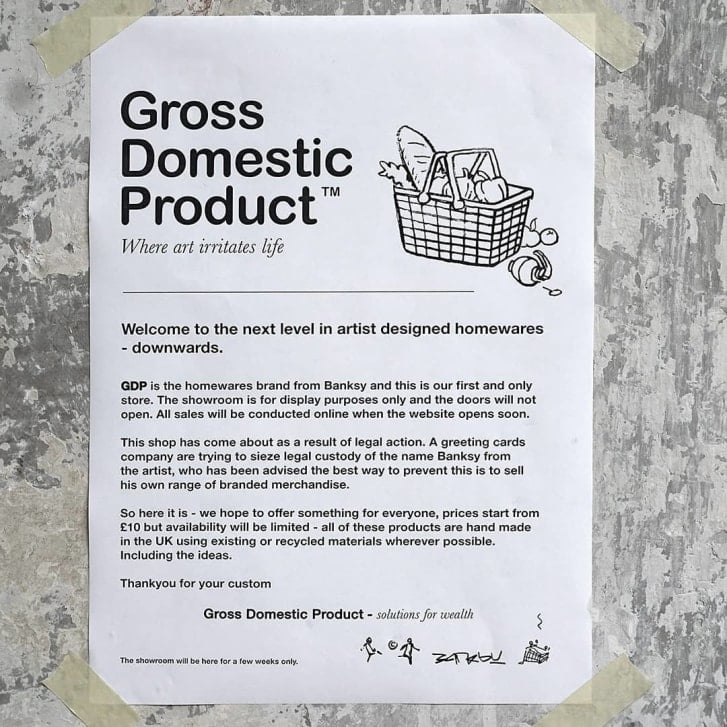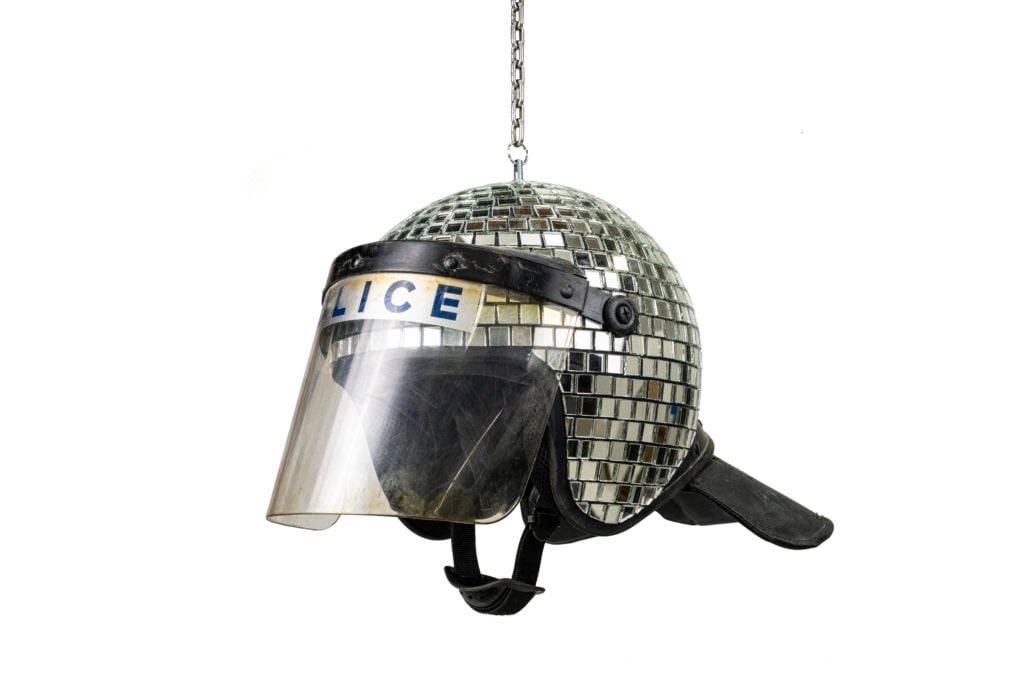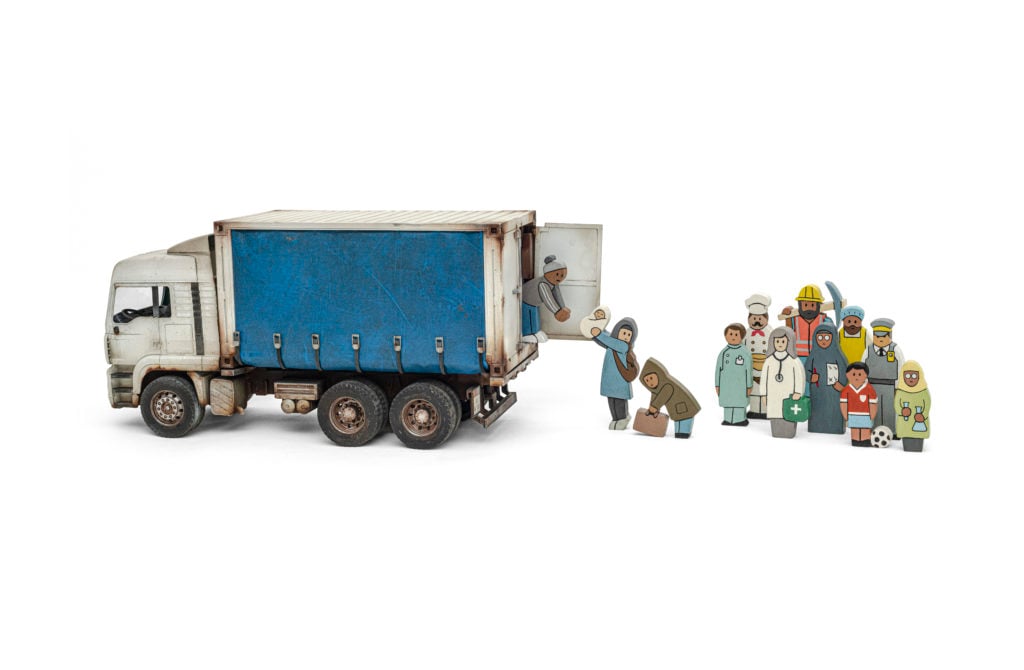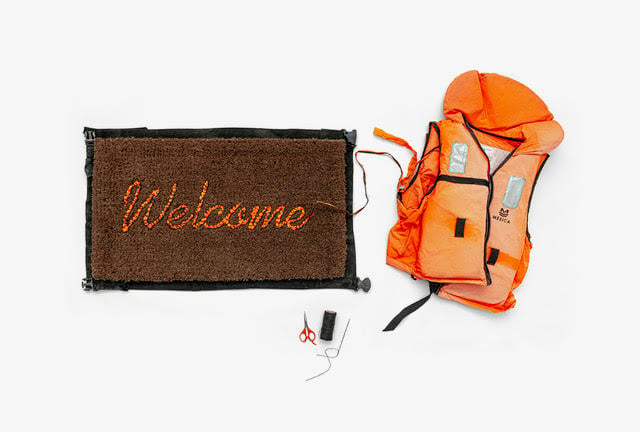On View
Banksy (and His Lawyer) Explain Why Fakes Have Forced the Artist to Go Into E-Commerce and Sharpen His Art
The proceeds from Banksy's store, Gross Domestic Product, are going to fund a migrant refugee ship.

The proceeds from Banksy's store, Gross Domestic Product, are going to fund a migrant refugee ship.

Sarah Cascone

Why is Banksy taking his art directly to the people with a new online store, Gross Domestic Product? Famously, the street artist once directed a film called Exit Through the Gift Shop—does this mean that he has finally decided to wholeheartedly embrace the gift shop?
Yes and no. For one thing, the online store—and its physical pop-up, which opened this week in Croydon (though you can’t go in)—raises money for a good cause. For another, he says he was forced into the move.
A recent legal dispute proved the last straw: A greeting card company has sought to take control of Banksy’s trademark, given that the artist hasn’t been using it himself. “Banksy has been forced into the merchandising market,” the artist’s lawyer Mark Stephens, told artnet News. “The European trademark categories became his muse—you have a ludicrous court action being met by creative genius!”
This was hardly the first time the artist has had to deal with unauthorized use of his name (a list of exhibition’s organized without Banksy’s knowledge can be found on his official site.)

Announcement from Banksy Instagram, explaining Gross Domestic Product.
“Banksy’s one of the most ripped off artists in the world,” argued Stephens. “He was being plagiarized by big business. We would see stuff that was out of register, in the wrong color, or the wrong way around, facing right to left instead of left to right as in the original design. The integrity of the work is being trampled upon, and it’s being done for commercial purposes.”
All the same, the artist hasn’t changed his stance on copyright, Stephens pointed out: “He’s quite happy for his work to be used for activism and personal enjoyment. But big corporate groups interested in making a profit pervert the art and take away from its real meanings.”

A police riot helmet disco ball is one of the goods available from Banksy’s new shop Gross Domestic Product. Photo courtesy of the artist.
Among the pointed items for sale are a toy truck filled with wooden dolls of migrants, police riot helmets that have been converted into disco balls, and “Welcome” mats stitched from life vests used by refugees crossing the Mediterranean and sewn by women in Greek detainment camps.
“This is a range of merchandise which could only be conceived and executed by Banksy,” Stephens says.

A toy truck full of migrant dolls is one of the goods available from Banksy’s new shop Gross Domestic Product. Photo courtesy of the artist.
The fact that many of the items reference the migrant crisis is no accident. “The proceeds from these products will go towards buying a new migrant rescue boat to replace the one confiscated by Italian authorities,” Banksy wrote in a statement, referring to the Spanish ship, Open Arms, which was seized by Italian authorities last year. “So you may well be committing a criminal offense by purchasing them.”
The physical Gross Domestic Product storefront in Croydon will be on view for two weeks before the goods become available in the online store.

A welcome mat made from a migrant life jacket is one of the goods available from Banksy’s new shop Gross Domestic Product. Photo courtesy of the artist.
Because of Banksy’s massive fame, over the years works by the street artist that originally appeared on city walls have been quickly snapped up and flipped at a profit, something he has criticized. Writing to artnet News, he joked about how dealing with the flippers had changed his work.
“The big problem I had with people removing my street work wasn’t that it was exploiting and stealing from the community—it was because the stolen stuff looked so much better than what I was making in the studio,” the artist said in an email. “The stuff torn off the walls has genuine history imbued in the dirt, it has these fantastic rough edges where its been cut out, and the painting is fast and precise—because it’s been made under the most compelling motivation there is: police response time.”

Members of the public queue to look at a new installation by elusive artist Banksy on October 1, 2019 in Croydon. Photo by Chris J Ratcliffe/Getty Images.
Just as in the case of his dust-up with the greeting card company, which has now spurred a creative solution in Gross Domestic Product, he suggested that dealing with those out to flip his murals has inspired his art.
“By contrast my canvases were sterile and labored and fussy,” he continued. “So although these thieving scumbags are a bit annoying, I choose to take the positives—they’ve taught me to to paint faster and rougher in the studio, and that’s made me a better artist.”